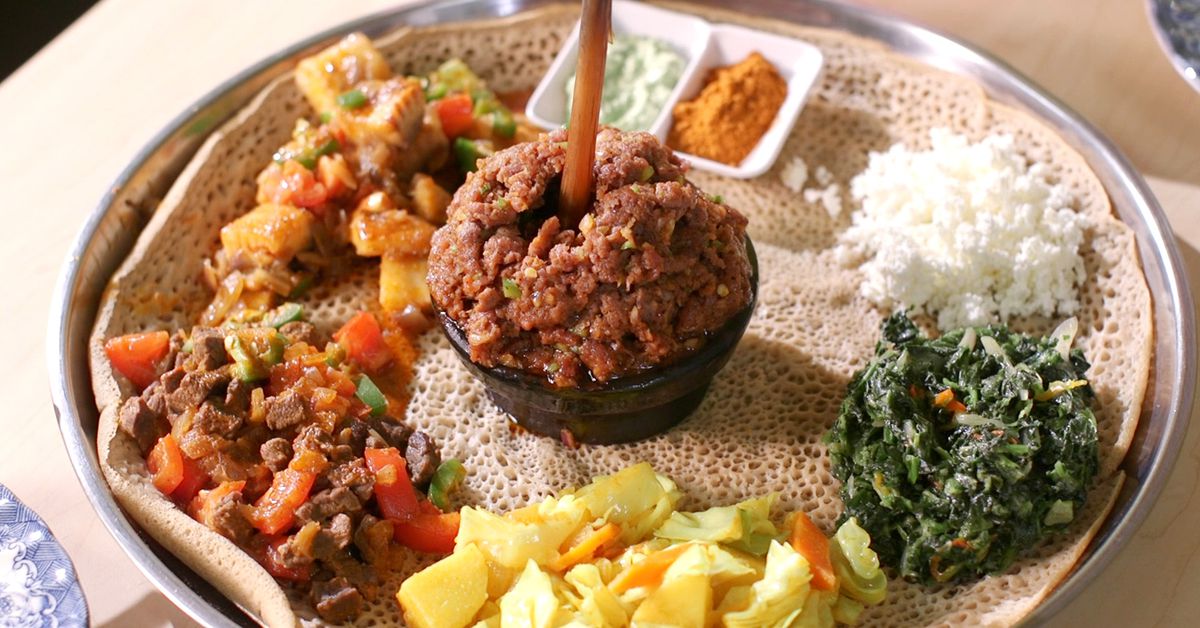
Ethiopian food is eaten in a unique way. Ethiopian Food is meant to be shared from a large platter placed in the middle of the table. There are no utensils used. Instead, you eat with your hands using the spongy flatbread called injera.
The injera is made from teff flour and has a slightly sour taste. It is a flat, round bread with a spongey texture full of little holes. A large injera is used to cover the platter as a base. Smaller rolled up injera pieces are also served on the side.
Different stews, vegetables, and meat dishes are arranged in piles on top of the large injera base. Common dishes include red lentil stews, greens like collard greens, yellow lentil stews, and meat dishes like beef or lamb tibs.
To eat, you tear off a piece of the rolled up injera. Then you use it to scoop up some of the stews and dishes from the platter. You’ll use the injera piece almost like a spoon or edible utensil to pick up and eat the food.
As you eat, you’ll tear off more pieces of injera to pick up more bites. The injera soaks up the flavors of the stews. Between bites, you can also nibble on the injera itself.
Eating continues by tearing off more injera, scooping up more stews, until everything on the platter is finished. Don’t be afraid to use your hands – that is the traditional way! Use your injera piece like a utensil to pick up all the various dishes.
When the platter is empty, you can even eat the large injera base that everything was arranged on. This soaked up all the stew flavors during the meal.
A fun part of eating Ethiopian food is using your hands and the injera bread instead of utensils. At first it might feel strange, but don’t worry about getting messy – that’s normal! Having the shared platter in the middle encourages the meal to be social and communal.
There are some etiquette tips to keep in mind. Use only your right hand to tear the injera and eat. Don’t reach too far across the platter – eat from the section closest to you. And it’s polite to roll up your injera piece before dipping it in the shared dishes.
Overall, Ethiopian food is a unique experience using injera flatbread and your hands. You scoop up bites with pieces of the spongy, sour injera. Going hand-to-mouth and sharing dishes from the platter makes for a social, communal meal. Following the etiquette like using your right hand shows respect for tradition. Give it a try for a delicious and fun cultural experience!






